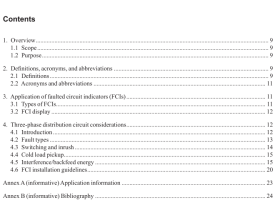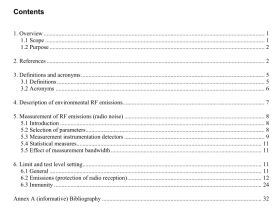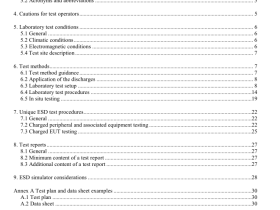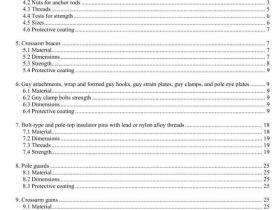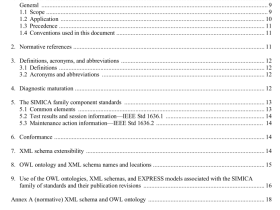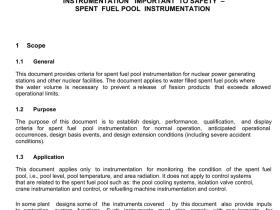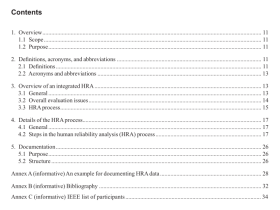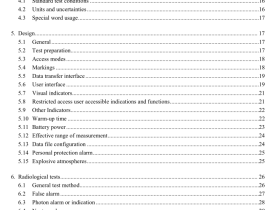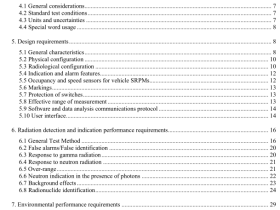IEEE Std 2870 pdf download
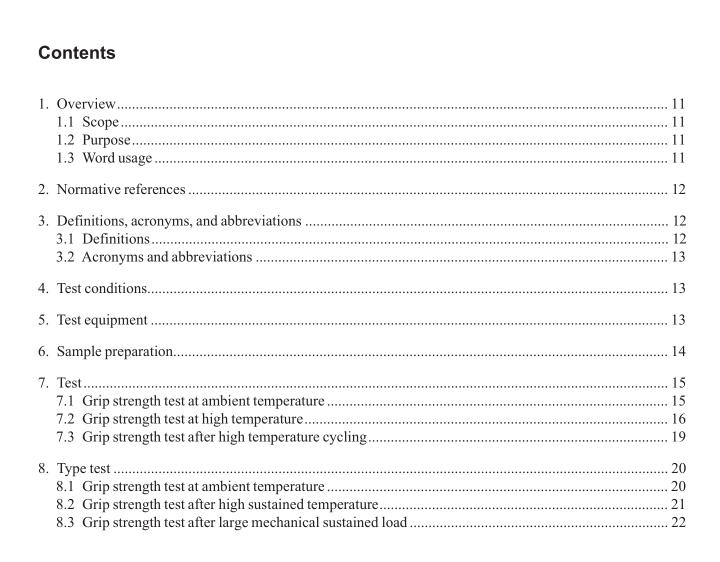
IEEE Std 2870 pdf download IEEE Guide for Grip Test Method for Fitngs of High-Temperature, Low-Sag Overhead Conductor Under Tension and Electric Current Co-Efect
high-temperature,low-sag overhead conductor (HTLS): Conductors typically formulated with eitherstandard aluminum strands,fully annealed aluminum or aluminum alloys, which resist annealing at 250 °Cor greater, or the part that bears the main mechanical load, which is made of material with small coefficient ofthermal expansion.
rated temperature: The maximum allowable temperature of conductor, or the temperature specified by thetcst consigner.
slip: After applying a load to the combination, it is regarded as slip when the pulling force cannot be increasedor the clamp on the conductor moves beyond the specified displacement.
splicing sleeve: The metal pipe fitting used to connect two conductors to extend their length and can meet themechanical and electrical performance requirements.
steady state temperature: The state under which the conductor temperature variation does not exceed 2 °Cwithin l5 min.
temperature rise: The difference between the temperature at a point and the reference temperature.
tension clamp:An electric power fitting that is used to secure terminals of conductors and carry the full tensileload of conductors.
test consigner: It can be the producer or the purchaser or the transmission line builder, or a combination of theparties mentioned above.
test current: The current that results in a target temperature at steady state.
3.2 Acronyms and abbreviations
RTS
rated tensile strength of the conductor
4. Test conditions
The test shall be carried out at a laboratory temperature between 15 °C and 30 °C and at an ambient humidityof no greater than 80%
All tests shall be carried out at ambient temperature unless otherwise stated in this standard.The power quality of the test current shall meet the requirements of IEC 60060-1.
Equipment that may generate heat sources, such as current generators and transformers, may be isolated in thelaboratory.
Magnetic materials may be kept 0.5 m away from the periphery of the samples.
5. Test equipment
Test equipment may include a horizontal tensile tester, a current generator, a current measuring device, atemperature measuring device, a humidity measuring device, an anemometer, auxiliary conductors for testing,etc.
Test equipment may be separate components or integrated.
The accuracy of the force measurement of the horizontal tensile tester shall be 1.5% or better.
The horizontal tensile tester may have a tensile rate of 30 mm/min~150 mm/min or 5.0 kN/min~7.5 kN/min.The tensile tester may have enough effective testing space.
The current test device includes a current generator and a current measuring device.The current measurementcan be carried out using current transformer(ac)or current sensor (dc).The accuracy of the current transformerand current sensor shall be 1% or better. The accuracy of the ammeter shall be 1% or better.
Tests may be carried out with ac. The deviation between the operating frequency and the nominal frequencymay be within士1 Hz.
NOTE—DC current may be used only in consultation with the test consigner.
Temperature may be measured by using a thermocouple or other suitable sensor with whosc maximumpermissible error does not exceed 0.5 °C.
Humidity may be measured by a hygristor, humicap, or other suitable sensor with maximum permissible errornot exceeding +5% relative humidity (RH).
The resolution of an anemometer may be up to 0.1 m/s.
Test equipment may be calibrated or verified by qualified measuring organizations.
6. Sample preparation
The high-temperature,low-sag overhead conductors for testing shall meet the requirements of IEC 61089,IEC 62219,IEC 62420,IEEE Std 1283TM,ANSIC119.4, or the local standards, as well as the technicalrequirements agreed upon by the conductor manufacturer and the purchaser.
Tension clamps or splicing sleeves for testing shall meet the requirements in IEC61284 as well as the technicalrequirements agreed upon by the conductor manufacturer and the purchaser.
The test consigner provides test samples that have not been used.
Cut a conductor into four segments and the length of each segment include the effective length (L) and thelength in the fittings.Three segments are used as samples of conductors for testing, and the other one is usedas spare sample.Assemble conductors and connectors as shown in Figure 1a) for two tension clamps, orFigure 1b) for two tension clamps and one splice.The length between connectors (L)of the conductor shall beat least 100 times the conductor diameter or 2.5 m, whichever is longer.(Note the total length of the conductorneeds to include the length of the conductor inside the connectors.)
The number of samples such as tension clamp or splicing sleeve used in the test may meet the form ofcombination of conductor and fittings, as shown in Figure 1.
